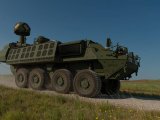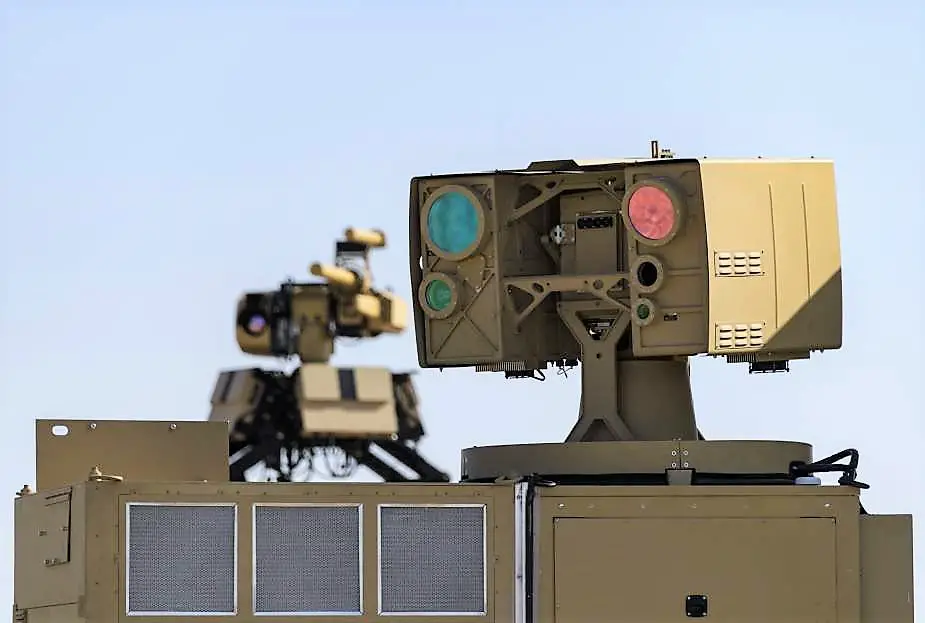
The Stryker A1 with the 50-kilowatt laser weapon provides a low cost-per-engagement Maneuver – Short Range Air Defense (M-SHORAD) system. It protects maneuvering forces from rocket, artillery and mortar; unmanned aerial system, and fixed- and rotary-wing manned aircraft. It also gives soldiers an effective counter-UAS system as well as provides counterintelligence, surveillance, and reconnaissance capabilities. The radar on the DE M-SHORAD detects an enemy drone about 8 kilometers in the distance. The laser locks onto the drone, tracking it as it moves closer to the vehicle. When the DE M-SHORAD detects incoming mortar fire, the laser quickly moves to intercept the incoming rounds and fires, instantaneously sending heated energy at the round, which is destroyed in seconds. The laser then returns to the drone, destroying it several seconds later.
The DE M-SHORAD 50kW-class laser is powered by high-capacity batteries that are charged by Stryker’s diesel engine. The vehicle is also fitted with Battle Management System and computerized communication system including manual/semi-automatic/ automatic target acquisition, aim-point selection, and aim-point management systems connected to the U.S. Army battle management system. The acquisition and tracking sensors consist of Infrared-based wide field-of-view (FOV) components for target acquisition and IR-based narrow FOV fine target tracker. Standard equipment also includes thermal management systems that control laser cooling systems and standard heating, venting, and air conditioning for all other subsystems.

Stryker DE M-SHORAD Guardian A1 50 kW-class laser weapon data
Stryker DE M-SHORAD Guardian 50 kW-class laser weapon 8x8 armored vehicle United States technical data fact sheet pictures video
8 kilometrin kantama
















